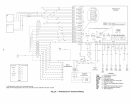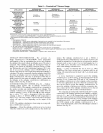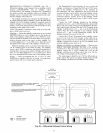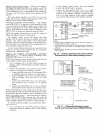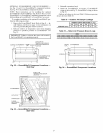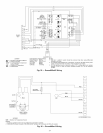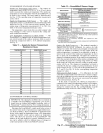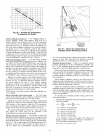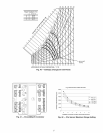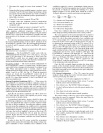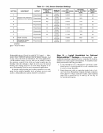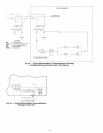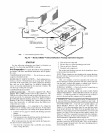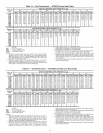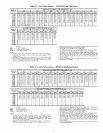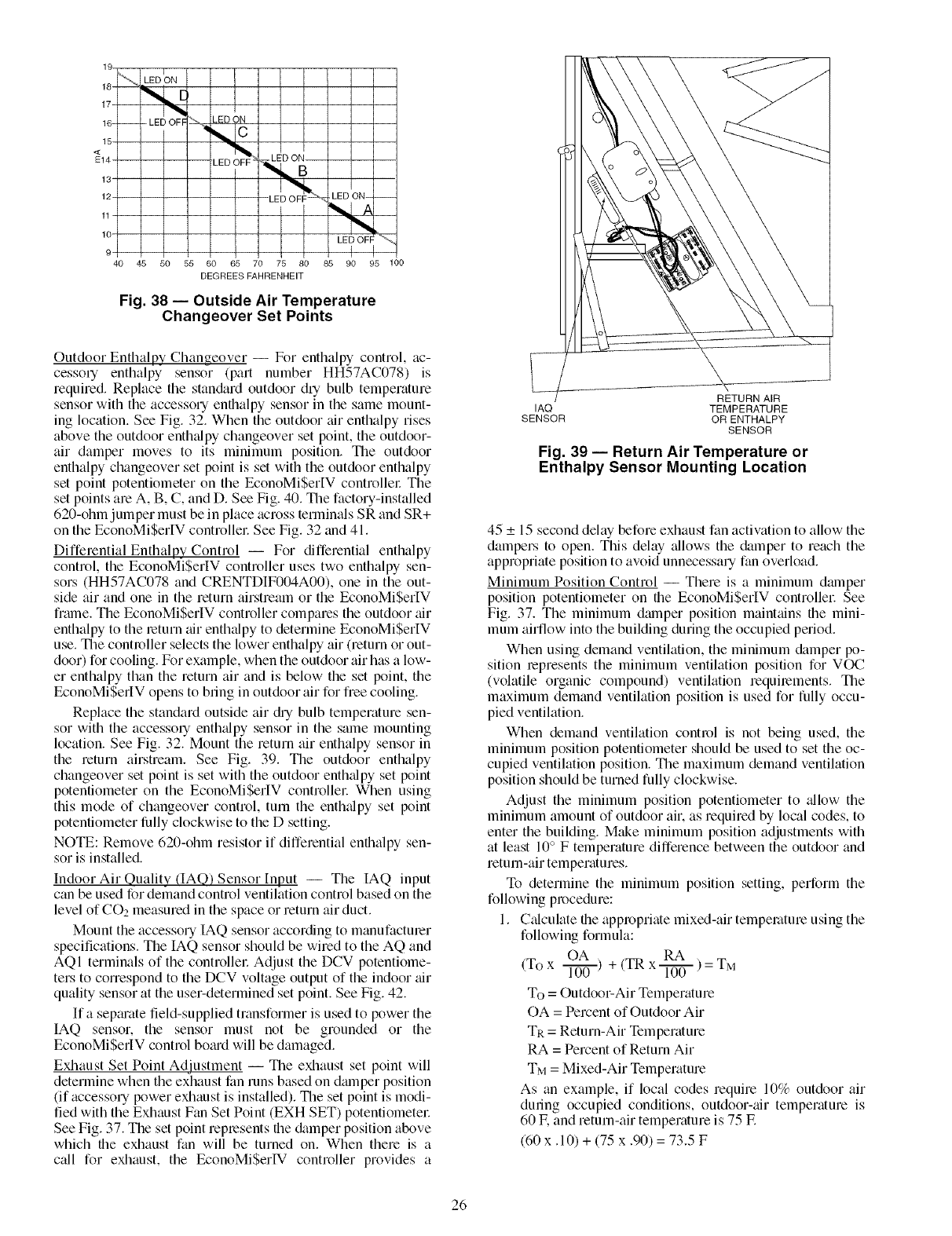
19
18
17
16-
15
<
E14
13
12
11
lO
9
40
I
LED ON
-- - LED OFF
45 50 55
_ED ON
LED O;
_< LED ON-- --
"t,4
I LED OFF
{
65 70 75 80 85 90 95 100
DEGREES FAHRENHEIT
Fig. 38 -- Outside Air Temperature
Changeover Set Points
Outdoor Enthalpy Changeover -- For enthalpy control, tic-
cessoq enthalpy sensor (part number HH57AC078) is
required. Replace the stan&ud outdoor dry bulb temperature
sensor with the accessory enthalpy sensor in the same mount-
ing location. See Fig. 32. When the outdoor tfir enthalpy rises
above the outdoor enth_@y changeover set point, the outdoor-
air damper moves to its minimum position. The outdoor
enthalpy changeover set point is set with the outdoor enthalpy
set point potentiometer on the EconoMiSerIV controllel: The
set points are A, B, C, and D. See Fig. 40. The factory-installed
620-ohm jumper must be in place across terminals SR and SR+
on the EconoMiSerIV controllel: See Fig. 32 and 41.
Differential Enthalpy Control -- For differential enthalpy
control, the EconoMiSerIV controller uses two enthalpy sen-
sors (HH57AC078 and CRENTDIF004A00), one in the out-
side air and one in the return airstream or the EconoMiSerIV
frmne. The EconoMiSerIV controller compares the outdoor tfir
enthalpy to the return tfir enthalpy to determine EconoMiSerIV
use. The controller selects the lower enthalpy air (return or out-
door) for cooling. For example, when the outdoor air has a low-
er enthalpy than the return air and is below the set point, the
EconoMiSerIV opens to bring in outdoor air for free cooling.
Replace the standard outside air ch_ bulb temperature sen-
sor with the accessory enth_dpy sensor in the same mounting
location. See Fig. 32. Mount the return air enthalpy sensor in
the return airstream. See Fig. 39. The outdoor enthalpy
changeover set point is set with the outdoor enth_flpy set point
potentiometer on the EconoMiSerIV controllel: When using
this mode of changeover control, turn the enth_flpy set point
potentiometer fiJlly clockwise to the O setting.
NOTE: Remove 620-ohm resistor if differential enthalpy sen-
sor is installed.
Indoor Air Quality (IAQ) Sensor [nput -- The IAQ input
can be used for demand control ventilation control based on the
level of CO2 measured in the space or return air duct.
Mount the accessory IAQ sensor according to manufacturer
specifications. The IAQ sensor should be wired to the AQ and
AQI terminals of the controllel: Adjust the DCV potentiome-
ters to correspond to the DCV voltage output of the indoor tfir
quality sensor at the user-determined set point. See Fig. 42.
If a sepmate field-supplied transformer is used to power the
IAQ sensor, the sensor must not be grounded or the
EconoMiSerlV control bomd will be damaged.
Exhaust Set Point Adjustment -- The exhaust set point will
determine when the exhaust fan runs based on dmnper position
(if accessory power exhaust is installed). The set point is modi-
fied with the Exhaust Fan Set Point (EXH SET) potentiometel:
See Fig. 37. The set point represents the cktmper position above
which the exhaust fan will be turned on. When there is a
c_dl for exhaust, the EconoMiSerIV controller provides a
RETURN AIR
IAQ TEMPERATURE
SENSOR OR ENTHALPY
SENSOR
Fig. 39 -- Return Air Temperature or
Enthalpy Sensor Mounting Location
45 _+15 second delay before exhaust fan actiw_tion to allow the
dampers to open. This delay _fllows the damper to reach the
appropriate position to avoid unnecessary fan overload.
Minimum Position Control -- There is a minimum damper
position potentiometer on the EconoMi$erIV controllel: See
Fig. 37. The minimum dmnper position mainttfins the mini-
mum airflow into the building during the occupied period.
When using demand ventilation, the minimum &tmper po-
sition represents the minimum ventilation position for VOC
(volatile organic compound) ventilation requirements. The
maximum demand ventilation position is used for fully occu-
pied ventilation.
When demand ventilation control is not being used, the
minimum position potentiometer should be used to set the oc-
cupied ventilation position. The maximum demand ventilation
position should be turned fully clockwise.
Adjust the minimum position potentiometer to _fllow the
minimum amount of outdoor air. as required by local codes, to
enter the building. Make minimum position adjustments with
at least 10° F temperature difference between the outdoor and
return-air temperatures.
To determine the minimum position setting, perform the
following procedure:
1. Calculate the appropriate mixed-air temperature using the
following formula:
OA + (TR RA
(To x l-T-if(]-) x _ ) = TM
To = Outdoor-Air Temperature
OA = Percent of Outdoor Air
TR = Return-Air Temperature
RA = Percent of Return Air
TM = Mixed-Air Temperature
As an example, if local codes require 10% outdoor air
during occupied conditions, outdoor-_fir temperature is
60 IF.and return-air temperature is 75 IF.
(60 x. 10) + (75 x .90) = 73.5 F
26



